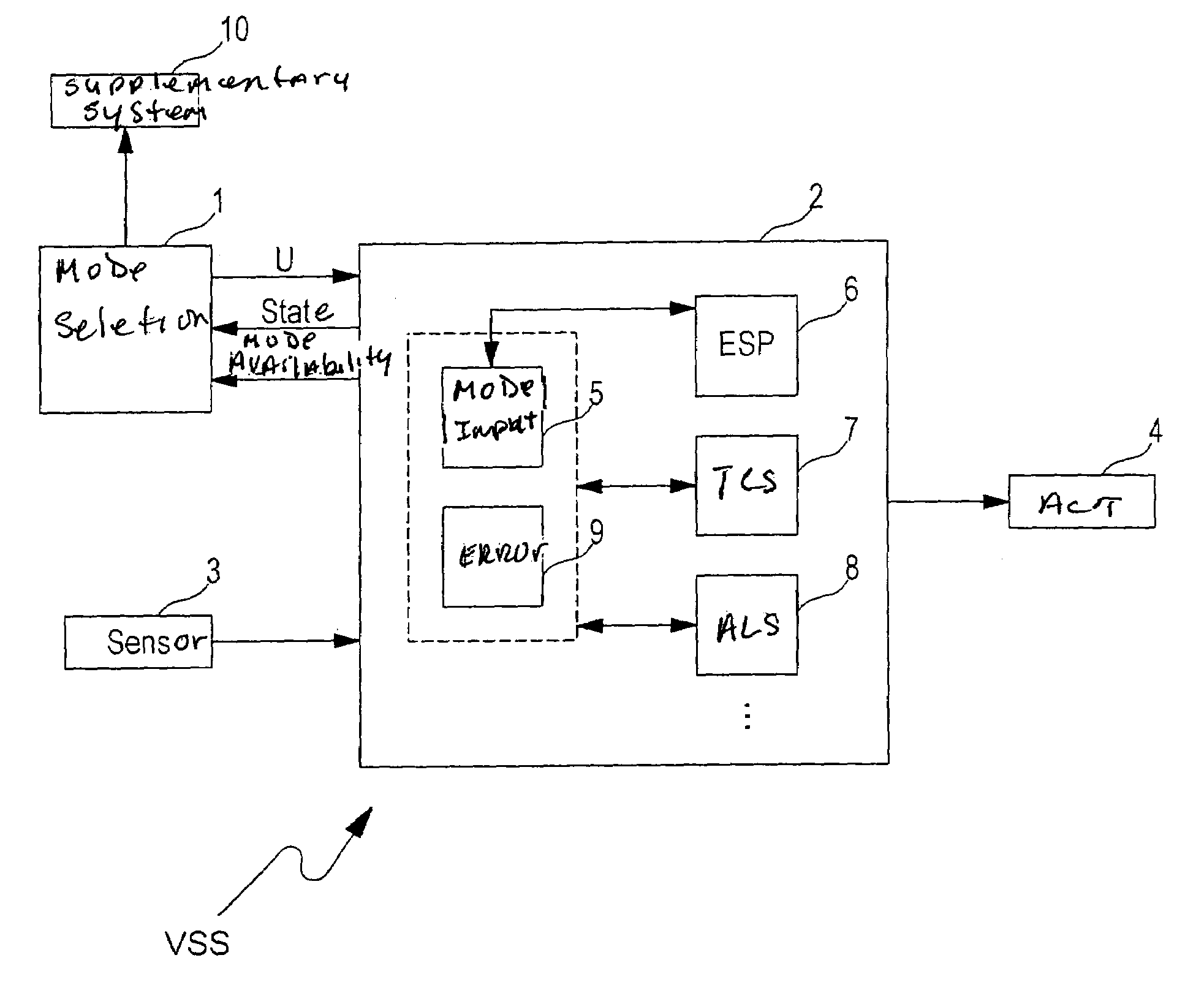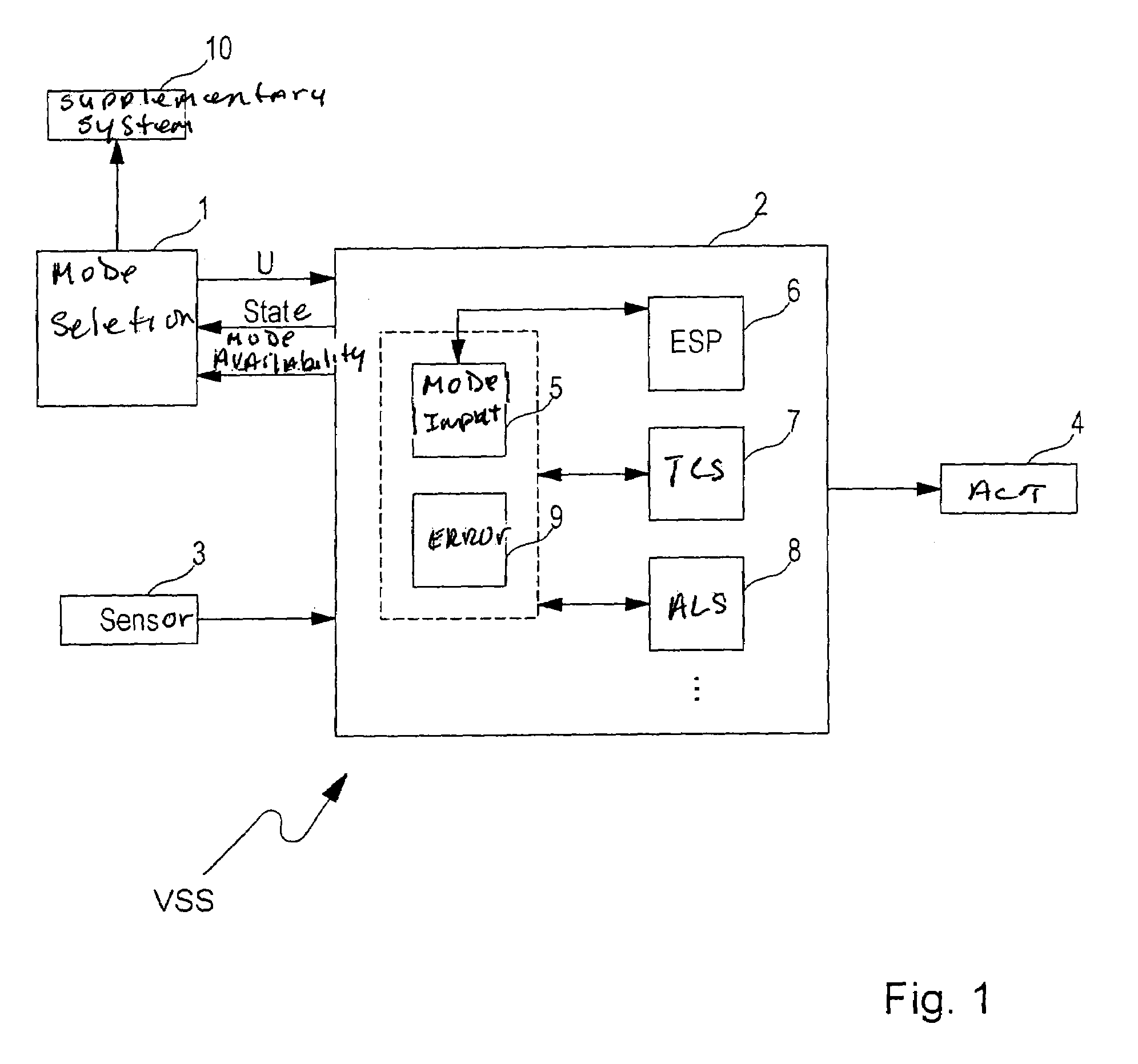Adaptation of a vehicle stabilizing system to the surface
a vehicle stabilizing system and surface technology, applied in the field of vehicle stabilizing systems, can solve problems such as undesirable stabilizing interventions, and achieve the effects of avoiding incorrect settings, reducing the influence of vehicle stabilization, and ensuring stability
- Summary
- Abstract
- Description
- Claims
- Application Information
AI Technical Summary
Benefits of technology
Problems solved by technology
Method used
Image
Examples
Embodiment Construction
[0028]As shown in FIG. 1, vehicle stabilizing system VSS essentially includes a control unit 2 in which various stabilization control algorithms 6, 7, 8 are stored, a sensor system 3 for detecting present actual values of driving state variables (e.g., wheel speeds, steering wheel angle, braking pressure, yaw rate, etc.), and various actuators 4 such as wheel brakes, an engine control unit, etc. for implementing a stabilizing intervention when an unstable driving situation is detected. For the sake of clarity, the sensors and actuators of system VSS are each combined in a block 3 and 4, respectively.
[0029]Stabilizing system VSS here includes control algorithms ESP 6, TCS 7, and ALS 8, each of which may include one or a plurality of control functions. Algorithm ESP 6 may contain, for example, a rollover mitigation (ROM), a steering angle control (e.g., AFS), or another known supplemental control function which is based, for example, on a yaw rate control. In addition to aforementione...
PUM
 Login to View More
Login to View More Abstract
Description
Claims
Application Information
 Login to View More
Login to View More - R&D
- Intellectual Property
- Life Sciences
- Materials
- Tech Scout
- Unparalleled Data Quality
- Higher Quality Content
- 60% Fewer Hallucinations
Browse by: Latest US Patents, China's latest patents, Technical Efficacy Thesaurus, Application Domain, Technology Topic, Popular Technical Reports.
© 2025 PatSnap. All rights reserved.Legal|Privacy policy|Modern Slavery Act Transparency Statement|Sitemap|About US| Contact US: help@patsnap.com


